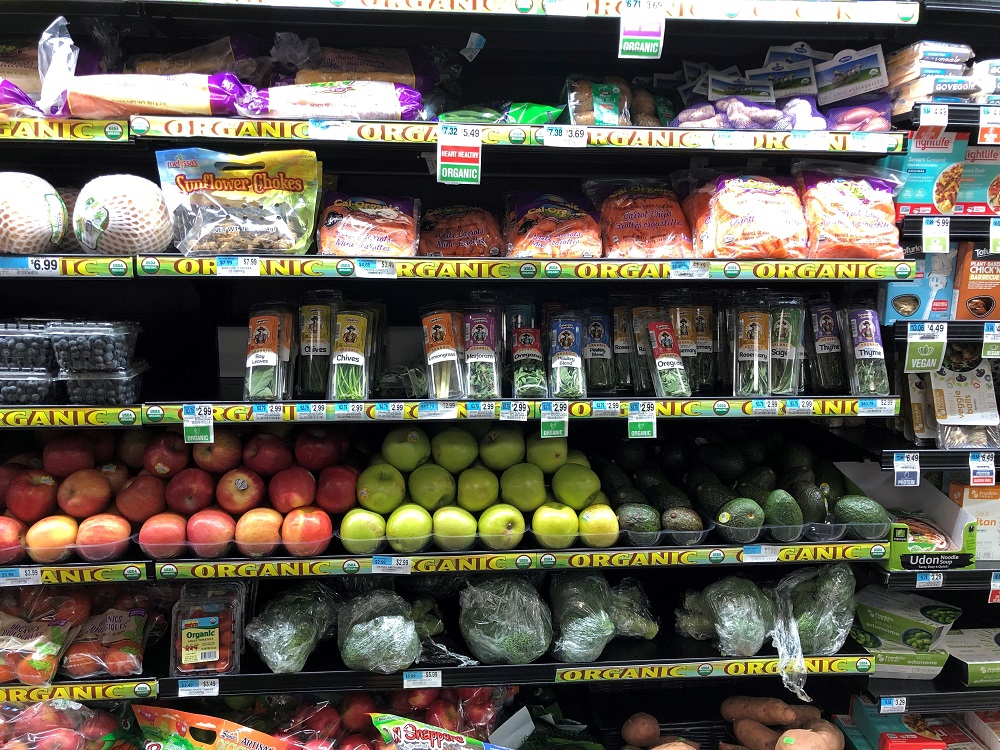If you were to take a physical inventory of your organic produce section, what would the gross profit results reveal?
Considering the opening inventory, charges, and closing inventory—plus the sales of organic produce—what would be the gross profit? Is it 30, 35, or 40 percent? Or is it less than that—25, 20 percent, or lower?
I surveyed several produce directors to determine if they did an inventory of organic items to determine the actual gross profit for the category. All replied they did not as most companies blend the organic numbers with conventional to arrive at one gross profit number.
"We do blend our organic with conventional produce, so it is not a separate department,” said Jeff Tomassetti, produce and floral director for Buehler’s Fresh Foods in Wooster, OH. “However, it is set up in its own category, and we get weekly movement and totals by store. I'm sure we could figure out our total gross profit on the organic category. I never really looked at the organic gross profit [separately], but that is a good question."
I surveyed several produce directors to determine if they did an inventory of organic items to determine the actual gross profit for the category. All replied they did not as most companies blend the organic numbers with conventional to arrive at one gross profit number.
Produce directors receive and review a weekly category analysis report. The report shows what was sold in sales and the top line billout gross rates.
The billout rates are top line gross profit percentages of product going into the stores. Those numbers do not include the shrink waste. Therefore, they are not bottom-line grosses.

Without taking a physical inventory—and including all the other numbers like opening and closing inventory, charges, sales, etc.—the actual gross profit of the organic produce section is not determined. Those numbers are merged with the conventional product and reported as one gross profit number.
Any missing product after inventory is the result of shrink. When that number is applied, it actuates the bottom-line gross profit of the overall produce department. Therefore, it does not identify the actual organic produce gross profit percentage rate.
Without taking a physical inventory—and including all the other numbers like opening and closing inventory, charges, sales, etc.—the actual gross profit of the organic produce section is not determined.
Some organic produce items are so sensitive that shrink can set in more rapidly. Short-shelf-life organics such as leafy greens, bananas, strawberries, and mushrooms are the best example of that shrink. Without knowing what that shrink number is, it will not tell the whole story of an accurate organic gross profit.
When I asked produce directors what the gross profit of their overall organic produce section is, most answered between 40 and 45 percent. What they really offered up was their top line bill out gross.
I followed up by asking them what their percentage of organic produce shrink was. They all took guesses of between 5 and 7 percent. Nobody could give me a hard and definitive number.
To get a better idea of the organic produce gross profit, I had the retailers do an exercise.
Some organic produce items are so sensitive that shrink can set in more rapidly. Short shelf-life organics such as leafy greens, bananas, strawberries, and mushrooms are the best example of that shrink.
I had three sales levels of stores—low, medium, and high. I had two stores from each level take a physical inventory of all their organic items and calculate their numbers to arrive at their gross profits for the total of the six stores. That gave me a better idea of where the gross was on the organic category.
Next, I put that number up against the organic billout gross and came up with a shrink number. The organic top line billout gross was 41.45 percent, and the average of the six-store organic gross was 32.60 percent. The shrink turned out to be 8.85 percent for organics—too high a number for organic shrink.
I further studied the assortment and found several items out of the one hundred organics in stock were hurting retailers the most. Those non-selling items were reduced, and the organic shrink dropped to 5.7 percent.
It's very important to dig in and do deeper analyses of your operation. You can't give only half-answers to upper management when they ask questions like, "What's the actual gross profit and shrink of the organic produce section?"






